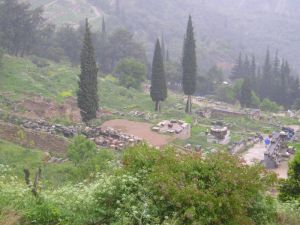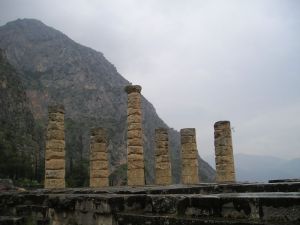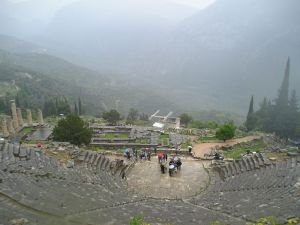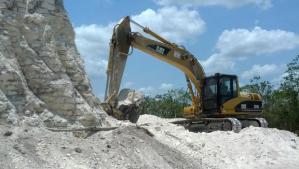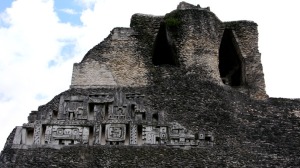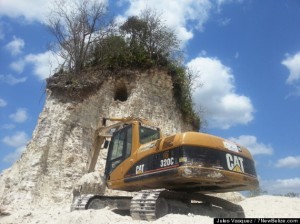I love Greece. Maybe it’s because when I was a kid I was really nuts about Greek mythology. Maybe it’s because I went on vacation there after months seeing nothing but Arabian and Egyptian deserts, so I was in desperate need of someplace a little cooler and greener. Maybe it’s because Greece was the first place I ever went on vacation with the nice lady who would, a while later, agree to marry me. Or maybe it’s a little of everything. Anyway, I love Greece.
These pictures are from Delphi, home of the world-famous Oracle where the priestess of Apollo was said to predict the future (after a nice donation, of course), and today a UNESCO World Heritage Site. We were staying in Athens with no thought to leaving the city until our planned visit to the island of Santorini (Thira) later in our trip, but then I saw an ad for a bus tour to Delphi and we booked it the next day. Aside from the chance to walk in the ruins of a place that was once one of the focal points of Greek religion and culture, it turns out that Delphi is just really gorgeous. It was lightly raining the whole time we were there, but after you’ve spent enough time living around deserts you realize that rain is uncomfortable, but it’s also pretty irreplaceable as far as getting some damn plants to grow. The site itself just hints at the grandeur that must have existed there once; earthquakes have taken their toll over the millenia. Also not helping preservation: in medieval times the village (known then as Kastri) was located right amidst the ruins, and residents reused the ruins and their materials to build and repair their houses. It wasn’t until the very end of the 19th century that residents were convinced to relocate to the modern town of Delphi, just west of the ruins, and then only after another earthquake had wrecked the town and they were offered free new homes if they agreed to move off of the site.
Anyway, on with the photos:
The main building on the site would have been the Temple of Apollo, where the oracle’s predictions were requested and received. Only the outline of the structure remains today, but you get a sense of its size at least:
Delphi is also home to a stadium and an amphitheater; the stadium is estimated to have seated 6500 and the theater is set up so that the audience would have an amazing view of the whole temple complex as the backdrop to whatever performance was happening:
Because of time considerations, or the weather, or a bad tour guide (I don’t know, and didn’t know enough to complain at the time), we did not get close to the Sanctuary of Athena Pronaia, but Wikipedia has a good picture of it here. Actually they might have been doing restoration or maintenance on the site; this was just before the 2004 Summer Olympics and a lot of stuff (including the national museum, ARGH) was unavailable because it was having work done in advance of the Games. This is why I also have no good photos of the Treasury of Athens, built after the Battle of Marathon and mostly restored to its former glory now, but surrounded by ugly (but necessary!) scaffolding when we were there. You can see the scaffolding (on the far left), as well as the Sybil Rock upon which the priestess sat as she offered her predictions, in this photo:


